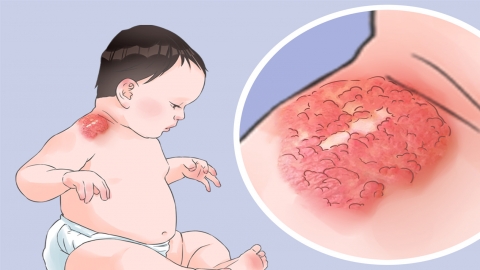What are the harms of hemangiomas in children?
Infantile hemangioma, a common benign vascular lesion in infants and young children, may regress spontaneously in some cases. However, its potential risks should not be overlooked. These include cosmetic concerns, local functional impairment, bleeding and infection, tissue compression and damage, and impacts on psychological development. A detailed analysis is as follows:

1. Cosmetic impact: Hemangiomas often present as red patches, nodules, or raised lesions on the skin surface, commonly occurring in exposed areas such as the face and neck. As the child grows, the lesion may gradually enlarge, darken in color, or expand in area, leading to noticeable disfigurement. This may cause social and emotional difficulties for the child later in life, including challenges in interpersonal relationships and personal development.
2. Local functional impairment: When hemangiomas develop near joints, eyes, or the oral cavity, their growth can restrict joint movement or impair vital functions such as vision, eating, and breathing. For example, orbital hemangiomas may compress the eyeball, leading to strabismus or refractive errors.
3. Bleeding and infection: The skin overlying a hemangioma is often thin and fragile. Trauma or friction can easily cause ulceration and bleeding. Such wounds tend to heal poorly and are prone to bacterial infection, resulting in symptoms like redness, swelling, and pus formation. In severe cases, scarring may occur.
4. Tissue compression and damage: Deep-seated hemangiomas may compress surrounding tissues, blood vessels, or nerves, causing poor circulation, pain, or sensory abnormalities. Prolonged compression can interfere with the normal development of bones and muscles, potentially leading to limb deformities or functional deficits.
5. Impact on psychological development: As children grow older, they become increasingly aware of their physical differences. They may face teasing or social isolation from peers, which can lead to feelings of inferiority, anxiety, and other negative emotions, ultimately affecting their mental health and social development.
Parents should closely monitor the growth of their child's hemangioma. If rapid enlargement, functional impairment, or recurrent bleeding occurs, prompt medical evaluation is essential to determine appropriate intervention and prevent disease progression. Daily care should focus on protecting the affected area from trauma and maintaining cleanliness and dryness.




